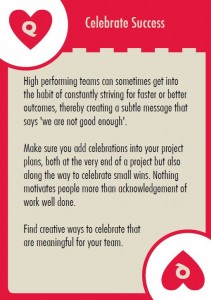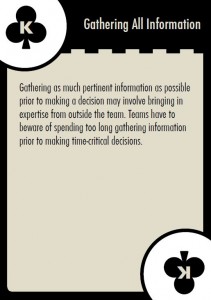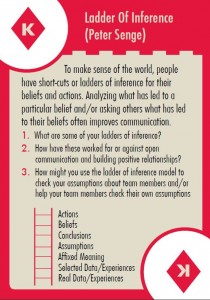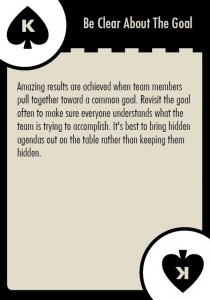Ok here’s my guilty little secret. I love Gail Vaz-Oxlade and all her various TV programs, books, blogs and tweets. If you don’t know who she is, she is the Queen of Realty TV about debt and since I’ve gotten my Shaw PVR, I tape all of her programs and watch them obsessively. While her ideas around debt and saving money are no nonsense and informative, that’s not why I watch her over and over. I watch her and love her because she is the kind of creative no nonsense coach that I aspire to, and her insights about helping couples get back on track applies equally well to teams.
Gail is gifted in her ability to hold up a mirror and force people to face up to reality … her weekly challenges that get people out of denial, into perspective shifting and into action are creative and funny. Consider the one where she makes a couple carry around a backpack of 50 pounds for a week so they physically “get” how their debt is weighing them down. Or has another couple remove all of the items in the house that don’t add value (because they wasted so much money on “stuff” that literally cluttered up their house) and while doing that limits the wife to only 30 sentences because she talks too much at her husband.
The show often starts with the couple being interviewed about their problems and challenges around money. What is most fascinating is often the couple knows what they are doing wrong, but just can’t quite get past the denial of it to make some changes. It takes Gail to help them see what their behavior is REALLY costing them.
This is so true of teams as well. I often interview individual members of a team before I actually do a team session with them. They all have a pretty good sense of what’s happening and even what they might need to do to make it better. But they don’t know how to disrupt the routine of the team to put challenges/issues on the table.
So that’s my team tip of the week. Use regular check-ins to take the temperature of the team and create alignment with your vision and goals. Once a month at a team meeting, do a round table on questions like “How are we living our vision/values?” “What are we doing well?” “What conversation do we need to have?” “What are we avoiding?”
It’s a whole lot easier to facilitate low risk type conversations and catch things early than wait until you hear Gail say something like “And if you keep this up, in 5 years you will be $650,000 in debt!”
3 of Hearts – Devote Time to Alignment (Need to know more about our approach to teamwork?) See our Teamwork Explorer blog post.)
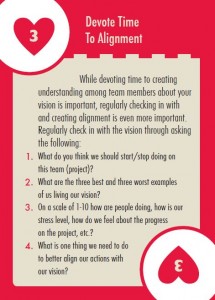
While devoting time to creating understanding among team members about your vision is important, regularly checking in with and creating alignment is even more important. Regularly check in with the vision through asking the following:
- What do you think we should start/stop doing on this team (project)?
- What are the three best and three worst examples of us living our vision?
- On a scale of 1-10 how are people doing, how is our stress level, how do we feel about the progress on the project, etc.?
- What is one thing we need to do to better align our actions with our vision?
What other tips do you have for keeping a team on track and raising issues?
